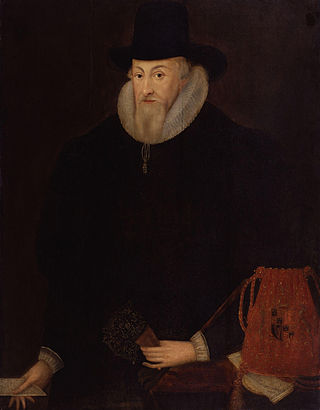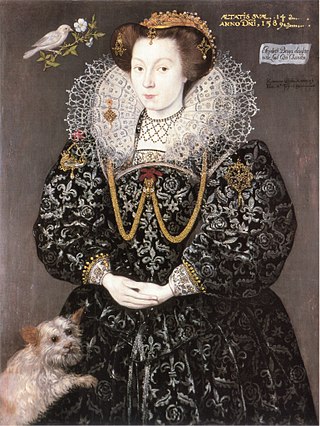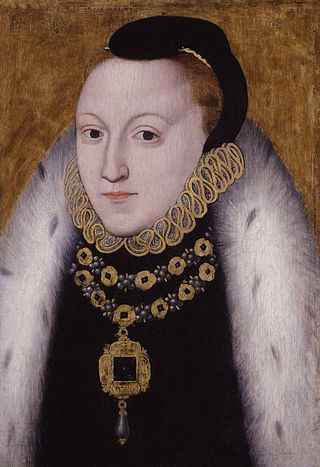
The masque was a form of festive courtly entertainment that flourished in 16th- and early 17th-century Europe, though it was developed earlier in Italy, in forms including the intermedio. A masque involved music, dancing, singing and acting, within an elaborate stage design, in which the architectural framing and costumes might be designed by a renowned architect, to present a deferential allegory flattering to the patron. Professional actors and musicians were hired for the speaking and singing parts. Masquers who did not speak or sing were often courtiers: the English queen Anne of Denmark frequently danced with her ladies in masques between 1603 and 1611, and Henry VIII and Charles I of England performed in the masques at their courts. In the tradition of masque, Louis XIV of France danced in ballets at Versailles with music by Jean-Baptiste Lully.

George Gascoigne was an English poet, soldier and unsuccessful courtier. He is considered the most important poet of the early Elizabethan era, following Sir Thomas Wyatt and Henry Howard, Earl of Surrey and leading to the emergence of Philip Sidney. He was the first poet to deify Queen Elizabeth I, in effect establishing her cult as a virgin goddess married to her kingdom and subjects. His most noted works include A Discourse of the Adventures of Master FJ (1573), an account of courtly intrigue and one of the earliest English prose fictions; The Supposes,, an early translation of Ariosto and the first comedy written in English prose, which was used by Shakespeare as a source for The Taming of the Shrew; the frequently anthologised short poem "Gascoignes wodmanship" (1573) and "Certayne Notes of Instruction concerning the making of verse or ryme in English" (1575), the first essay on English versification.

Thomas Egerton, 1st Viscount Brackley,, known as Lord Ellesmere from 1603 to 1616, was an English nobleman, judge and statesman from the Egerton family who served as Lord Keeper and Lord Chancellor for twenty-one years.

Theobalds House in the parish of Cheshunt in the English county of Hertfordshire, north of London, was a significant stately home and (later) royal palace of the 16th and early 17th centuries.
The Entertainment at Althorp, or The Althorp Entertainment, performed on 25 June 1603 is an early Jacobean era literary work, written by Ben Jonson. It is also known as A Particular Entertainment of the Queen and Prince, or The Satyr. The work marked a major development in Jonson's career, as the first of many entertainments and masques that he would write for the Stuart Court.
Thomas Preston (1537–1598) was an English master of Trinity Hall, Cambridge, and possibly a dramatist.
John Manningham was an English lawyer and diarist, a contemporary source for Elizabethan era and Jacobean era life and the London dramatic world, including William Shakespeare.
Costume and gold and silver plate belonging to Elizabeth I were recorded in several inventories, and other documents including rolls of New Year's Day gifts. Arthur Jefferies Collins published the Jewels and Plate of Queen Elizabeth I: The Inventory of 1574 from manuscripts in 1955. The published inventory describes jewels and silver-plate belonging to Elizabeth with detailed references to other source material. Two inventories of Elizabeth's costume and some of her jewellery were published by Janet Arnold in Queen Elizabeth's Wardrobe Unlocke'd.
Lady Audrey Walsingham was an English courtier. She served as Lady of the Bedchamber to queen Elizabeth I of England, and then as Mistress of the Robes to Anne of Denmark from 1603 until 1619.

The Princely Pleasures, at the Court at Kenilworth (1576) by George Gascoigne, is an account of courtly entertainments held by Robert Dudley, the first Earl of Leicester upon Queen Elizabeth I’s three weeks visit to his Kenilworth Castle, Warwickshire in 1575. Based on European festival book models, Gascoigne's pamphlet is an idealized version of the courtly revels occasioned to entertain the Queen during her stay at the castle from 9 July to 27 July.

Elizabeth Brydges was a courtier and aristocrat, Maid of Honour to Elizabeth I, and victim of bigamy. She was a daughter of Giles Brydges, 3rd Baron Chandos, and Frances Clinton, who lived at Sudeley Castle.
Dorothy Hastings was a courtier to Elizabeth I of England and Anne of Denmark
Mary Radcliffe or Ratcliffe (1550-1617) was a courtier of Queen Elizabeth I of England.

Elizabeth Southwell (1584–1631) was an English courtier who lived in Florence.
The Hermit's Welcome at Theobalds was an entertainment for Elizabeth I performed in May 1591, based around a hermit.
Philadelphia, Lady Scrope was an English aristocrat and courtier.

Affabel Partridge was a London goldsmith who served Elizabeth I. He is thought to have marked his work with a hallmark of a bird.

The Masque at Ashby Castle or Entertainment at Ashby was written by John Marston for Henry Hastings, 5th Earl of Huntingdon and Elizabeth Hastings, Countess of Huntingdon performed at Ashby de la Zouch Castle for Alice Spencer, Countess of Derby in August 1607.
The Entertainment of the Two Kings of Great Britain and Denmark or The Hours was written by Ben Jonson and performed at Theobalds House on 24 July 1606. John Harington of Kelston described another masque of Solomon and Sheba, performed one day at Theobalds after dinner. There is some doubt over Harington's account. In May 1607 another masque An Entertainment of the King James and Queen Anne at Theobalds was performed when the keys of the house were given to Anne of Denmark.
Tudor Royal Progresses were an important way for the Tudor monarchs to consolidate their rule throughout England. Following his victory at the Battle of Bosworth in August 1485, the first Tudor monarch, Henry VII, ensured his coronation, called a parliament, married Elizabeth of York – all in London before embarking on his first Royal Progress in March 1486. The last Tudor Royal Progress took place in summer 1602, as Elizabeth I, the last Tudor monarch died in March 1603.









